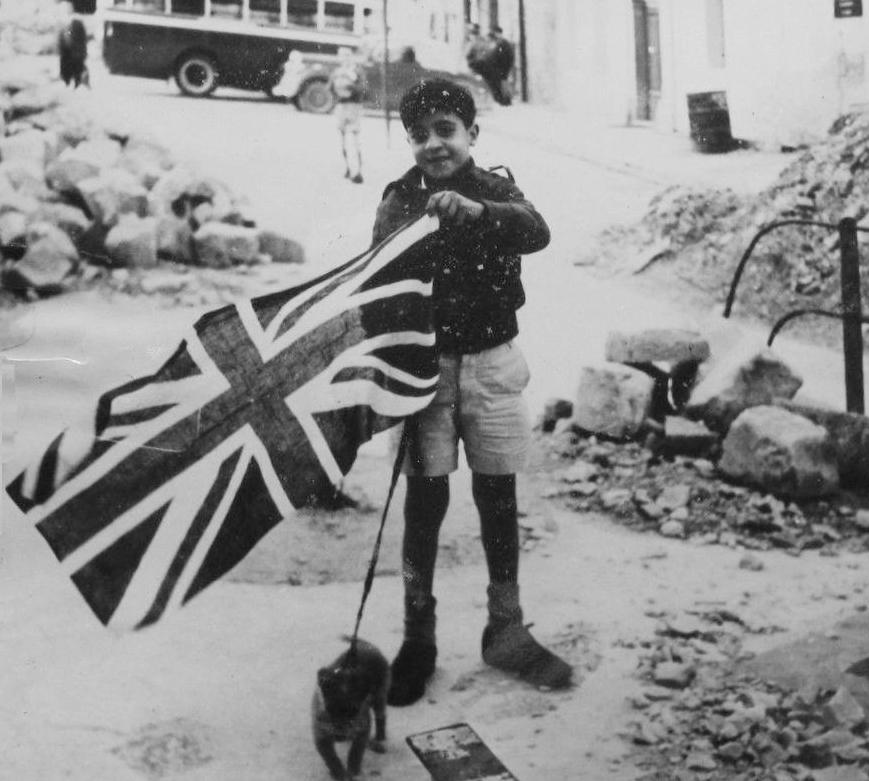
World War II: Malta--Axis Seige Lifted (November 1942)

Figure 1.---This boy is preparing to welcome the arrival of Royal Navy ships at Valletta. We are not sure if he is Maltese or British, but he is certainly pro-British. We think most Maltese were, but this is a topic we have not yet addressed. The press caption read, "A young Maltese boy on his way to the Bastion to welcome the British Navy with his Union Jack. A naval force, recently arrived in Grand Harbour, Valletta. For the second time in one week the Bastions were crowded with people of Malta eager to welcome in the British Navy. As the ships slid into Valletta's Grand Harbour, the sounds of the bands playing on their decks, mingled with the cheers of the people ashore. The 8th Army's desert victory which placed Libyan air bases at the disposal of the R.A.F. has made the approach to Malta much safer for Allied shipping." The photo was dated January 11, 1943.
|
|
As the Afrika Korps fell back from El Alemaine along the Libyan coast, one port after another as well as Axis airfields fell to the advancing British. This substantially reduced the pressure on Malta. Not only were there fewer airfields to attack Malta, but also the convoys brining in supplies. There were still occasional air raids and attacks on convoys, but at a sharply reduced number and intensity. The shift was almost immediate. The Operation Stoneage convoy reached Malta from Alexandria virtually untouched (November 20). Stoneage is often noted seen as the end of the 2-year Axis siege. The Operation Portcullis convoy reached Malta without any losses (December 6). From that point, ships began sailing to Malta without even joining convoys. The capture of Libyan airfields not only prevented NAZI air raids on the convoys, but gave the RAF Desert Air Force fields from which they could clobber the convoys. Massive supplies flowed on to the island. Ships delivered 35,000 t (November) and 55,000 t (December). There were still occasional,air attacks, but largely ineffectual. The last German air raid occurred as Sicily was falling to the Allies (July 20, 1943) It was the 3,340th alert since Italian air raids had begun June 11, 1940. [Spooner, pp. 229-30.] The battered Afrika Korps and the troops Hitler rushed to Tunisia, had limited air cover to counter growing Allied air power. Kesserling had badly depleted Luftwaffe forces in costly attacks on Malta. And little of what they had could now be spared for attacking Malta--especially after the 8th Army broke through the Marreth Line (March 1943). Axis attacks did not entirely stop until the Axis surrender in Tunisia (May 1943) and the invasion of Sicily (July 1943). [Holland]
Sources
Holland, James. Fortress Malta: An Island Under Seige 1940-43 (Miramax, 2003).
Spooner, Tony. Supreme Gallantry: Malta's Role in the Allied Victory, 1939–1945 (London: 1996).
HBC

Navigate the Boys' Historical Clothing Web Site:
[Return to Main Malta World War II page]
[Return to Main early World War II phase]
[Return to Main World War II campaign page]
[Biographies]
[Campaigns]
[Children]
[Countries]
[Deciding factors]
[Diplomacy]
[Geo-political crisis]
[Economics]
[Home front]
[Intelligence]
[POWs]
[Resistance]
[Race]
[Refugees]
[Technology]
[Bibliographies]
[Contributions]
[FAQs]
[Images]
[Links]
[Registration]
[Tools]
[Return to Main World War II page]
[Return to Main war essay page]
Created: 2:42 AM 10/16/2013
Spell checked: 2:10 AM 11/4/2013
Last updated: 2:10 AM 11/4/2013



